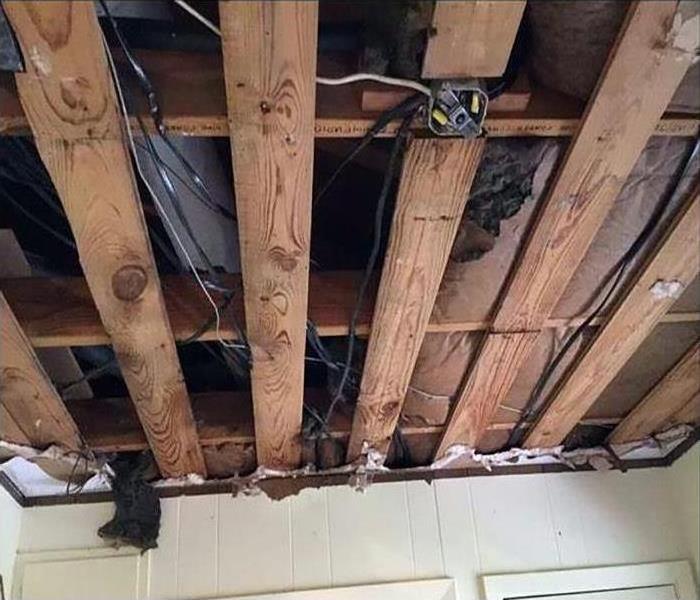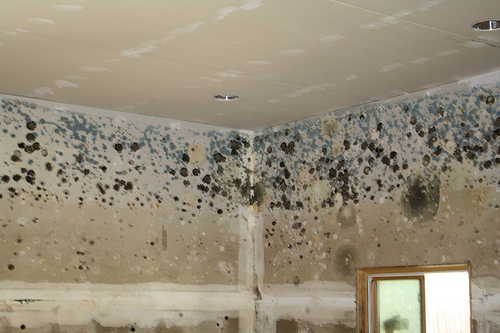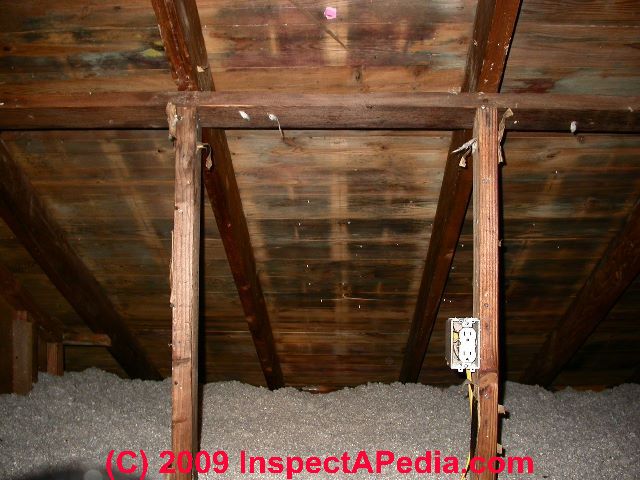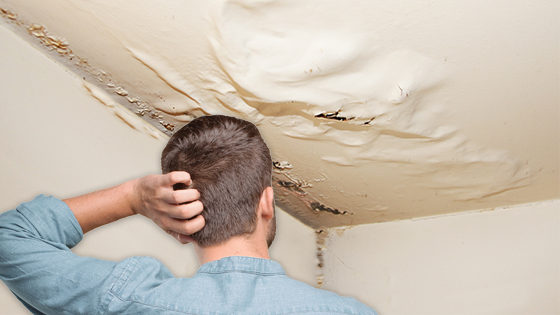Systemic growth occurs when the roof leak causes enough moisture buildup in the attic to cause mold growth throughout the entire area.
Mold inside wall from roof leake undetectable.
In fact you may not see signs of mold on the outside of the wall but the inner wall may be growing mold spores that can be spread throughout the house.
Most people don t realize that it s not just serious water damage such as flooding or a visible leak that leads to mold.
When it comes to mold and water leaks many people are unfamiliar with the extent of their connection.
Though rare i ve certainly observed roof leaks traveling down walls without leaving obvious damage on the ceiling.
Take our advice above into consideration when dealing with ceiling mold and remember to always gear up when disturbing any mold spores.
Drywall needs to be removed in order to get to the leak to repair it.
Because it s an interior wall condensation is unlikely unless the interior rh is extremely high.
If have a roof leak and need to get it fixed element roofing offers roof leak repair and roofing in livermore and roofing in hayward services.
Dealing with a water leak in a wall is usually a pretty big task.
If water has been leaking inside the wall for a while which is usually the case since water leaks in walls usually aren t apparent for a while a large area of drywall and.
Any kind of leak that isn t properly fixed can cause mold to grow.
Dealing with water leak in wall.
In this case the moisture buildup is indirect the roof leak only affects a small area but the dampness in the air causes.
If a leak in a wall has gone on for some time mold may be growing in and on your wall.
There you have it how to remove ceiling mold after a roof leak.
Condensation forms when water vapor in the air meets cold surfaces and cools to become liquid.
Note any signs of mold or mildew.
It s very common when you have mold on your walls to also find mold inside the walls.
Even if you don t see mold it may still be growing inside of the walls that have been saturated with water by the leak.
Even if the mold problem does not seem serious water stains can indicate a need for treatment of black mold inside walls.
In its early stages mold looks like a dense cluster of black or brown dots.
If it s wet and there s truly no plumbing in the wall you might have a roof leak.
Systemic or limited growth.
What does attic mold growth from a roof leak typically look like.
When dealing with wall mold you have to check for mold in walls too.
Roof leaks cause two types of mold growth.
How and why mold grows on walls the most common causes of mold growing on walls are high humidity condensation and water leaks which are often hidden inside the wall.
Mold growth within the walls.
Condensation is especially common on walls which form the perimeter of a house.






























